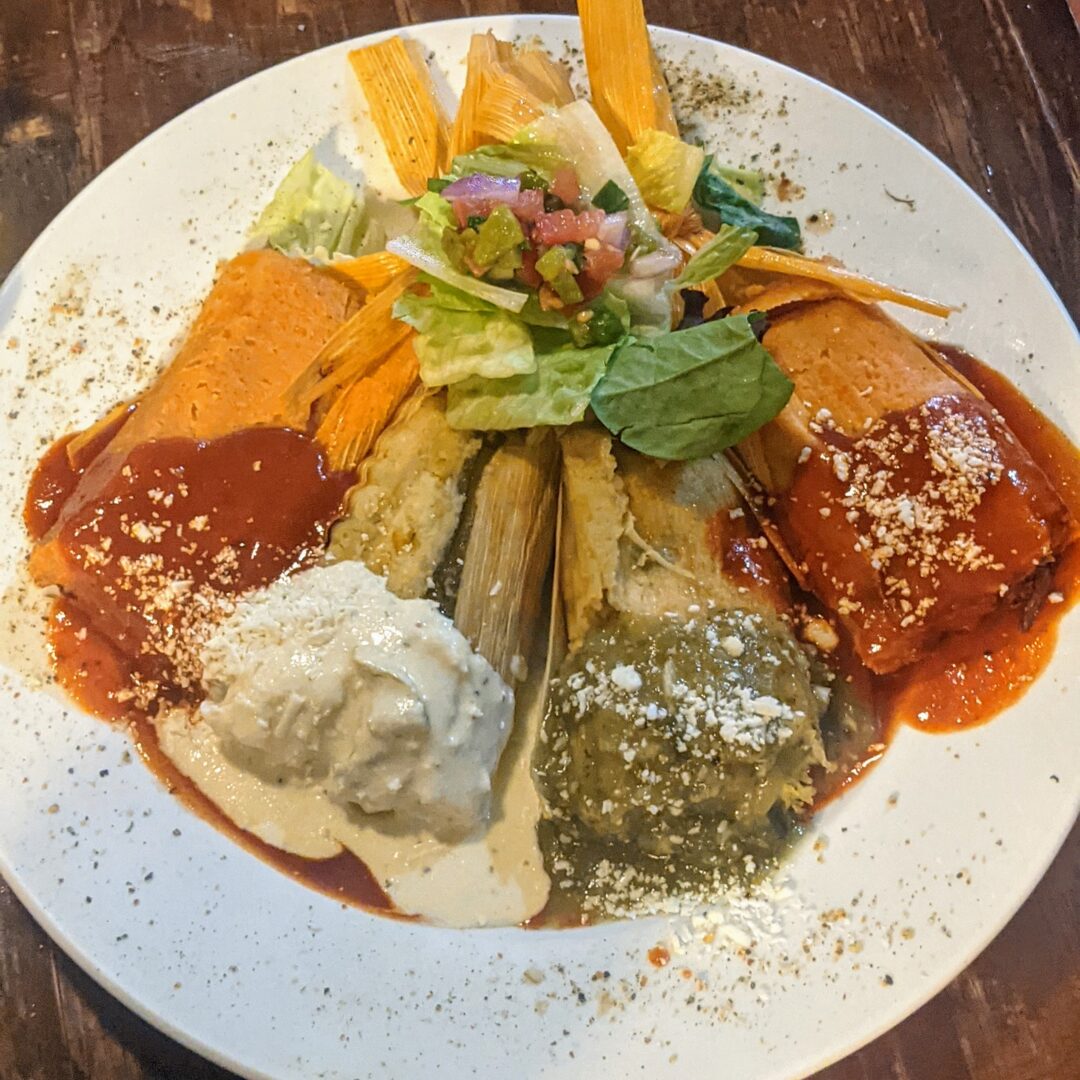Aside from being close to a service center for our chassis repairs and a plethora of craft breweries, our location at St. Vrain State Park allowed us to be within driving range of Rocky Mountain National Park. Rocky Mountain National Park topped my list for places to visit while we were here. Sunday’s weather offered a near-perfect chance to get to the park to explore.
I planned our adventure using the National Park Service website and this book about National Parks. As with most national parks, dogs are not allowed anywhere other than where cars can go. But with over 400 square miles to explore, we found plenty to fill our day at the park. Our late September visit had me wanting most to see aspens in their fall glory and experience rutting season for elk.
It turns out it was Elk Fest in Estes Park last weekend. We didn’t account for the heavy traffic in town or the number of people who would be heading into Rocky Mountain NP from Estes Park. Hindsight being 20/20, we would have entered the park via US-34/Fall River Visitor Center at the northeast end of RMNP, and we would have arrived earlier. Instead, we entered the park from US-36/Beaver Meadows Visitor Center. Just driving through Estes Park, we had our first glimpse of elk resting in a pasture off the side of the road.
We made a quick stop at the visitor’s center to use the restroom, get a park map and review plans with a ranger, and, of course, get my National Park stamp. From there, we headed back into the traffic lined up to get in the park. Luckily, since we have an annual pass, we were able to bypass a large part of the line and get through the gates quickly.
We headed up US-36 to Deer Ridge Junction, where we headed towards Old Fall River Road. We stopped amongst many other groups at the Alluvial Fans for a picnic lunch we brought with us. Nourished and watered, we began the one-way, mostly gravel, 11-mile, up-hill drive that was built by prisoners and opened in 1920. With no guard rails, this road has you leaning away from the cliff-side of the car. Open only from July – September; this was the first auto route in RMNP. It is a slow-paced, beautiful drive with 16 switchbacks and a few pull-offs. Hard to imagine that at its inception, this was a two-way road with drivers needing to back up in areas to negotiate passing. And, at 16% grade in some places, with weak engines and gravity-fed fuel systems, some cars needed to climb the hill in reverse to get up the steep slope.
Our modern-day Jeep Patriot got us up the road without much issue. We were shocked to see a couple of sedans on this stretch of road and would recommend traveling only in an SUV or truck. As it is late in the season, many areas of road needed grading. Deep ruts could pose a threat to a low riding vehicle. We enjoyed the drive, windows down taking in the smells, air temperatures, and sound of water falling down the mountain. The steep road led us through all three of the ecosystems in the park from the lush Montaine (below 9,000 feet) packed with ponderosa pines, to the wet Subalpine (9,000 to 14,000 feet), and finally the Alpine tundra (above 11,400 feet). The final destination from this scenic 90-minute drive was the Alpine Visitors Center, where we were able to look down and through the mountains from where we had come.
Packed with visitors, and lacking in parking, we had a brief look around at the alpine tundra surrounding us. No trees live here. At almost 12,000 feet, it’s too cold! I’m amazed that anything can grow in the limited (6-week) growing season here. What does grow is miniaturized. Plants sit low to the ground providing some color and coverage to the mountain, but nothing like the thick pines that forest the lower elevations of the park below.
We returned to the Jeep and began our descent down Trail Ridge Road back towards Estes Park. Trail Ridge Road runs 48 miles from the western side of the park at Grand Lake to the eastern side at Estes Park. This road, touted as the “scenic wonder road of the world,” was opened in 1932. With over 11 miles above treeline, this is the park’s most traveled road and is a much easier road to travel than Old Fall River Road. Two-way travel on wider roads with less incline and greater turn-radius on switchbacks, our descent felt a little like a walk in the park after Old Fall River Road. More precisely, it felt like a walk in the park on a beautiful fall day with aspens in their golden glory lining many of the roads at tree level. We pulled off in a few places to admire the beauty as we made our way to Moraine Park.
Moraine Park is where native Coloradoans and tourists park cars, set up lawn chairs, host picnics, and show off expensive camera lenses while watching elk graze in the meadow. As it is elk rutting season, male elks usually solitary or part of a bachelor herd, are busy trying to garner the attention of the female elk. Unlike any sound other than a 6th-grade horn player’s first efforts, the noise made by male elks is appropriately called bugling. And it seemed to be coming from every direction on Sunday evening as we drove through Moraine Park and headed slowly back out of the park. Traffic leaving was as slow or slower than upon our arrival at RMNP. This traffic jam wasn’t about rush hour after a day’s work. It turns out it was Just other people like us marveling at the size of these elk bucks and their desire to be noticed by the does. We must have seen a hundred elk in the last part of our day in the park and a few more as we made our way past Estes Lake. What a way to wrap up a fun fall weekend of adventures!
Please note, www.ontheroadofadventure.com is a participant in affiliate marketing programs, including Amazon Services LLC Associates Program as well as others. These programs are designed to provide a means for sites to earn advertising fees by advertising and linking to amazon.com as well as other sites.




One Reply to “Fall in Rocky Mountain National Park”
Comments are closed.